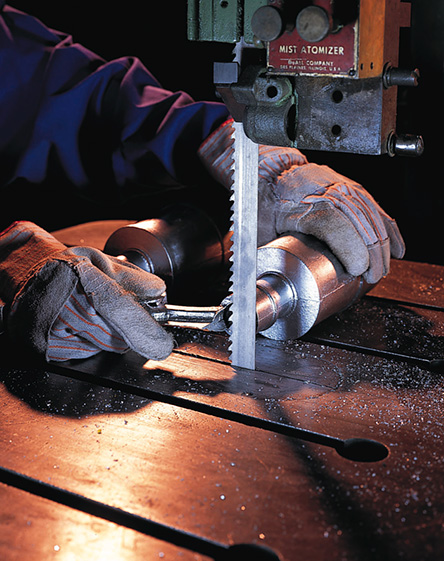Bandsaw blades can be use for many of the long and often heavy rip cuts similar the Jigsaw Blades
I expect many of those building the same projects might well decide to do the same.
This was mostly due to the kind of varied and often arbitrary lengths I chose for the panel strips and the superstructure framework.
The other options are extensive hand sawing or some other kind of machine milling.
In my workshop, I am limited by a single device.
Everything is done flawlessly for me by different bandsaw blades.
My usage of it was well worth it given the end product of the design.
Developing texture and laminations in each of the items.
I developed required me to use a variety of thin strip settings, and mostly, tedious work.
I always go through the hand methods I use in any project thoroughly for those who want to further develop their skills, gain the true benefits of the added exercise.
Hand tools give and then too the high-brain demand handwork challenges us with, it’s all there.
Hand tools remain current technology for woodworkers today.
The loss of skilled long-term teachers from an artisan maker background lessened with each decade.

My point here then is that if you are using bandsaw blades for sawing.
your material it’s worth using the best blade you can.
One that’s hopefully in the affordable range and one that gives a decent clean cut when the two parts separate.
Rip-cutting and re-sawing are one and the same mostly.
Consider The Material
The kind of blade you require depends largely on the kind of material you wish to cut.
The thickness of the material must be taken into consideration while selecting a woodworking blade.
For instance, a general-purpose blade with a lower TPI (Teeth Per Inch) can be used to cut softer woods like pine and cedar.
Conversely, only higher TPI blades may be used to cut tougher woods like maple and oak.
What’s more? The type of blade you wish to source is also determined by the thickness of the wood.
A wider set and deeper gullet on the bandsaw blade are necessary for thicker wood in order to remove material effectively and keep stability during cutting.
Choosing the Right TPI (Teeth Per Inch)
The TPI refers to the number of teeth on the blade per inch.
A higher TPI means more teeth, which results in smoother cuts on thinner materials.
Conversely, a lower TPI is ideal for thicker materials where chip clearance is crucial.
For general woodworking tasks, a medium-range TPI blade around 6-8 would be suitable as it strikes a balance between speed and precision.
Blade Length and Width
Blade widths and length are crucial factors to be considered while sourcing woodworking bandsaw blades.
The blade width refers to the distance between the tip and base of the teeth.
As a rule of thumb, a wide blade is more appropriate for cutting through thick materials.
This is because a wider base allows for stability and helps achieve clean, straight cuts.
A narrow blade should be used when you want intricate carving on thinner materials.
Conclusion
